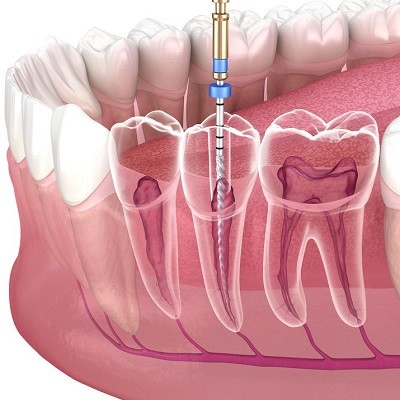When it comes to treating tooth decay, your dentist may suggest either a filling or a root canal treatment. If you’ve been told you have a deep cavity, it’s normal to wonder: “Can I just get a filling, or do I need a root canal?” Understanding the difference can help you make informed decisions about your dental care.
What Is a Deep Cavity?
A cavity is a hole in the tooth caused by decay. When the decay goes beyond the outer layers (enamel and dentin) and approaches the pulp — the soft tissue inside the tooth containing nerves and blood vessels — it becomes a deep cavity.
Depending on how close the decay is to the pulp and whether the pulp is infected or inflamed, your dentist will recommend one of two treatments:
Option 1: Deep Cavity Filling
What It Is:
A filling involves cleaning out the decay and filling the space with a dental material such as composite resin or amalgam.
When It’s Used:
- The pulp is not yet infected or irreversibly damaged.
- There may be slight irritation, but no lingering pain or abscess.
- X-rays show the nerve is still healthy.
The Procedure:
- Local anesthesia is applied.
- The decay is removed.
- The cavity is filled and sealed.
- Sometimes, a protective liner or base is added to shield the pulp from irritation.
Pros:
- Quick and minimally invasive.
- Preserves more of your natural tooth.
- Less expensive than a root canal.
Cons:
- If the decay is too close to the nerve, you may develop pain later, requiring further treatment like a root canal.
Option 2: Root Canal Treatment (RCT)
What It Is:
A root canal involves removing the infected or damaged pulp, cleaning and disinfecting the canals, and then sealing the space.
When It’s Used:
- The pulp is infected, inflamed, or dead.
- You have lingering or severe tooth pain.
- There is swelling, abscess, or sensitivity to hot/cold that doesn’t go away.
- The tooth is non-vital (not responding to tests).
The Procedure:
- Local anesthesia is given.
- The pulp is removed from inside the tooth.
- Canals are cleaned, shaped, and disinfected.
- The space is filled with a biocompatible material.
- A crown is usually placed afterward to protect the tooth.
Pros:
- Saves a severely damaged or infected tooth.
- Prevents the spread of infection.
- Restores function and appearance.
Cons:
- More complex and time-consuming.
- Costlier than a filling.
- May need a crown, adding to the total cost.
So, Which One Do You Need?
| Criteria | Deep Cavity Filling | Root Canal Treatment | |
| Pain | Mild or none | Moderate to severe, lingering | |
| Pulp Health | Healthy or slightly irritated | Infected or dead | |
| Procedure Time | 30–60 minutes | 1–2 visits, 60–90 minutes each | |
| Cost | Lower | Higher | |
| Longevity | Good with follow-up | Long-lasting with crown |
Need Help Deciding?
Your dentist will assess your tooth with clinical tests and X-rays to recommend the best treatment. Ignoring symptoms can lead to more pain, infection, and possibly tooth loss.
At oral Medics dental clinic and implant Centre, we provide:
- Expert diagnosis
- Gentle treatment options
- Affordable payment plans
Book your consultation today in best dental clinic in Chandkheda Ahmedabad
Call us at 9898903556 or book your consultation online at oralmedics.com
Prevention Is Key
Whether you’re getting a filling or a root canal, the best solution is always prevention. Brush twice a day, floss daily, avoid excessive sugary snacks, and visit your dentist regularly.
Don’t wait until it hurts — early treatment means simpler, more affordable care!

